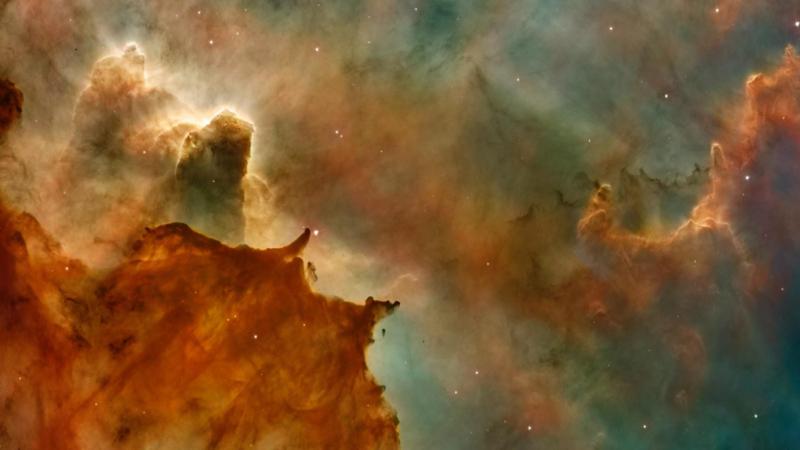
Image by NASA via Unsplash
Cosmic rays live up to their name. Produced by extreme events in the distant cosmos, they travel through vast distances of space close to the speed of light before reaching the Earth. The Earth’s atmosphere absorbs some, while others travel down to its surface. What the cosmic rays exactly comprise of, what astronomical events produce them, and why we observe them on Earth –– had baffled astronomers since their discovery in 1912. Over the years, researchers have reached a consensus that explosions of massive stars at the end of their lives, which they call ‘supernovae’, produce cosmic rays. They have also figured that a single cosmic ray particle may have as much energy as a cricket ball travelling at about 100 kilometres per hour. Cosmic rays are charged particles, mainly hydrogen and helium, and nuclei of lithium, beryllium, boron, carbon, oxygen, magnesium, silicon, and iron. They also consist of electrons, and positrons, a positively charged electron.
How the number of cosmic rays varies with their energy is what astronomers call the cosmic ray ‘spectrum’. Astronomers make observations of cosmic ray spectra via specially designed cosmic ray detectors. On-board the International Space Station, which orbits the Earth once every 90 minutes, sits one such detector. It measures the spectra of the different charged particles comprising cosmic rays. Usually, the number of cosmic rays with higher energies is lower. Over the years, however, astronomers have observed an excess of positrons having an energy of more than 10 gigaelectronvolts, or 10 GeV. For an estimate, this is the energy of a positively charged electron accelerated across a 10,000,000,000 volt battery! Positrons with energy more than 300 GeV, however, are lower in comparison to what astronomers expect. This behaviour of positrons between 10 and 300 GeV is what astronomers call the ‘positron excess’ phenomenon, which remains a mystery. Theories attempting to explain the discrepancy have invoked ‘pulsars’, or fast-rotating stars made entirely of neutrons, and the elusive ‘dark matter’ which astronomers are yet to observe directly.
Researchers from the Raman Research Institute (RRI), Bengaluru, have resolved the mystery in a new study published in the Journal of High Energy Astrophysics. The study was funded by the Department of Science and Technology, Government of India. Their proposal is simple –– cosmic rays while propagating through the Milky Way galaxy interact with matter producing other cosmic rays, primarily electrons and positrons. The authors argue that these new cosmic rays are the origin of the ‘positron excess’ phenomenon.
The Milky Way consists of giant clouds of molecular hydrogen. They are the seats of the formation of new stars and can be as massive as 10 million times the Sun’s mass. They can extend up to 600 light-years, the distance that would take light 600 years to travel. Cosmic rays, produced in supernovae explosions propagate through these clouds before they reach the Earth. Cosmic rays interact with molecular hydrogen and can give rise to other cosmic rays. As they propagate through these clouds, they decay from their original forms and intermix, lose their energy by energising the clouds, and may also get re-energised. The researchers from RRI studied all these astrophysical processes via a code they set up on the computer, using a publicly available code.
The code considers 1638 molecular hydrogen clouds in the Milky Way that other astronomers have observed across different wavelengths of the electromagnetic spectrum.
“We have followed three different catalogues to construct a comprehensive one,” explains Agnibha De Sarkar of RRI, one of the authors of the study.
The combined catalogue consists of ten molecular clouds in the immediate neighbourhood of our Sun. These galactic clouds provide the astronomers a crucial input –– the number of gigaelectronvolt cosmic rays. These help them determine the excess number of positrons that reach the Earth. The computer code the researchers used, by taking into account the exact number of nearby galactic molecular clouds, was successfully able to reproduce the observed number of positrons at gigaelectronvolt energies.
“We consider all mechanisms via which cosmic rays interact with the molecular clouds to show that nearby molecular clouds can be a viable contributor to the positron excess phenomenon,” says Agnibha.
Not only the positron excess, the computer code accurately reproduces the spectra of protons, antiprotons, boron, carbon, and all other components of cosmic rays.
“Our method explains all the observed numbers without running into any contradiction,” says Agnibha, comparing it with the currently available explanations invoking pulsars that run into contradictions.
Nevertheless, the researchers considered simple geometrical structures of the molecular clouds, whereas real molecular clouds have complex geometries. They plan to address these shortcomings in their future work.
“Along with a more realistic environment inside the molecular clouds, we plan to include more cosmic ray data from other satellites to establish our idea beyond any doubt,” Agnibha signs off.
This article has been run past the researchers, whose work is covered, to ensure accuracy.
This work has been previously published here.






